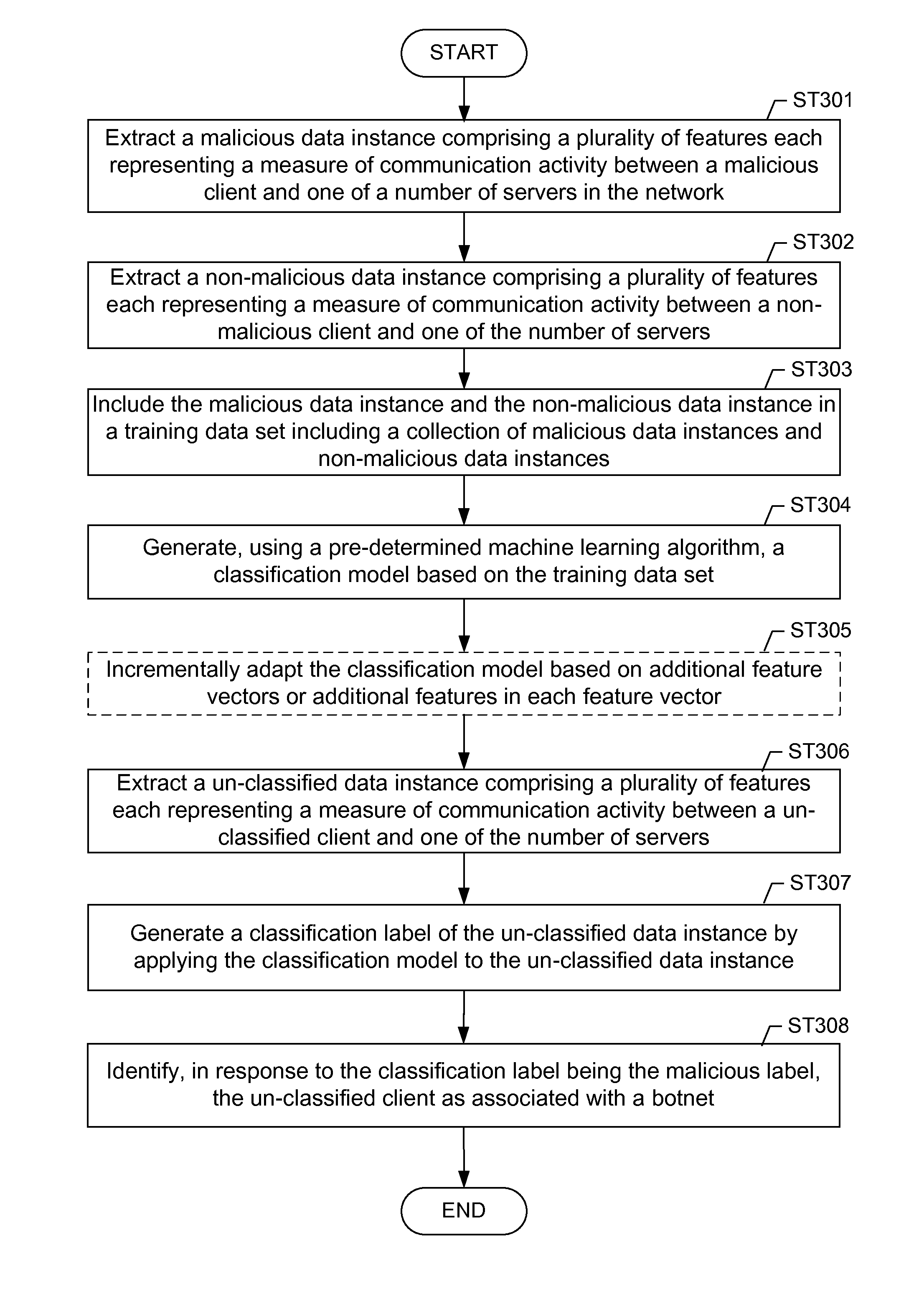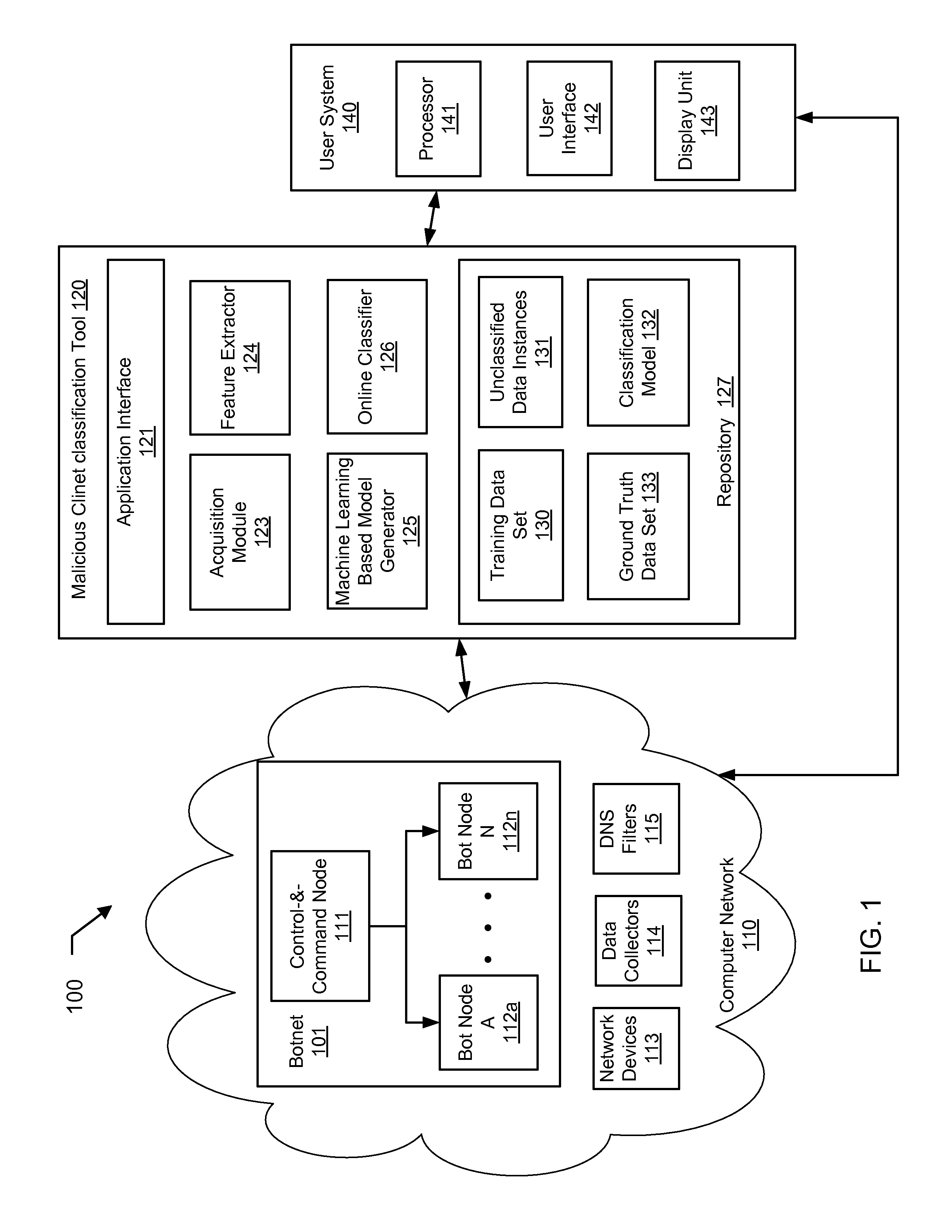Machine learning based botnet detection with dynamic adaptation
a machine learning and botnet technology, applied in the field of computer networks, can solve problems such as difficulty in real traffic traces and difficulty in detection of c&c channels
- Summary
- Abstract
- Description
- Claims
- Application Information
AI Technical Summary
Benefits of technology
Problems solved by technology
Method used
Image
Examples
Embodiment Construction
[0016]Specific embodiments of the invention will now be described in detail with reference to the accompanying figures. Like elements in the various figures are denoted by like reference numerals for consistency.
[0017]In the following detailed description of embodiments of the invention, numerous specific details are set forth in order to provide a more thorough understanding of the invention. In other instances, well-known features have not been described in detail to avoid obscuring the invention.
[0018]Embodiments of the invention address the problem of detecting bots in network traffic based on a classification model learned during a training phase using machine learning algorithms based on features extracted from network data associated with either known malicious or known non-malicious client and applying the learned classification model to features extracted in real-time from current network data. In one or more embodiments, the features may be derived by using only the layer-...
PUM
 Login to View More
Login to View More Abstract
Description
Claims
Application Information
 Login to View More
Login to View More - R&D
- Intellectual Property
- Life Sciences
- Materials
- Tech Scout
- Unparalleled Data Quality
- Higher Quality Content
- 60% Fewer Hallucinations
Browse by: Latest US Patents, China's latest patents, Technical Efficacy Thesaurus, Application Domain, Technology Topic, Popular Technical Reports.
© 2025 PatSnap. All rights reserved.Legal|Privacy policy|Modern Slavery Act Transparency Statement|Sitemap|About US| Contact US: help@patsnap.com



